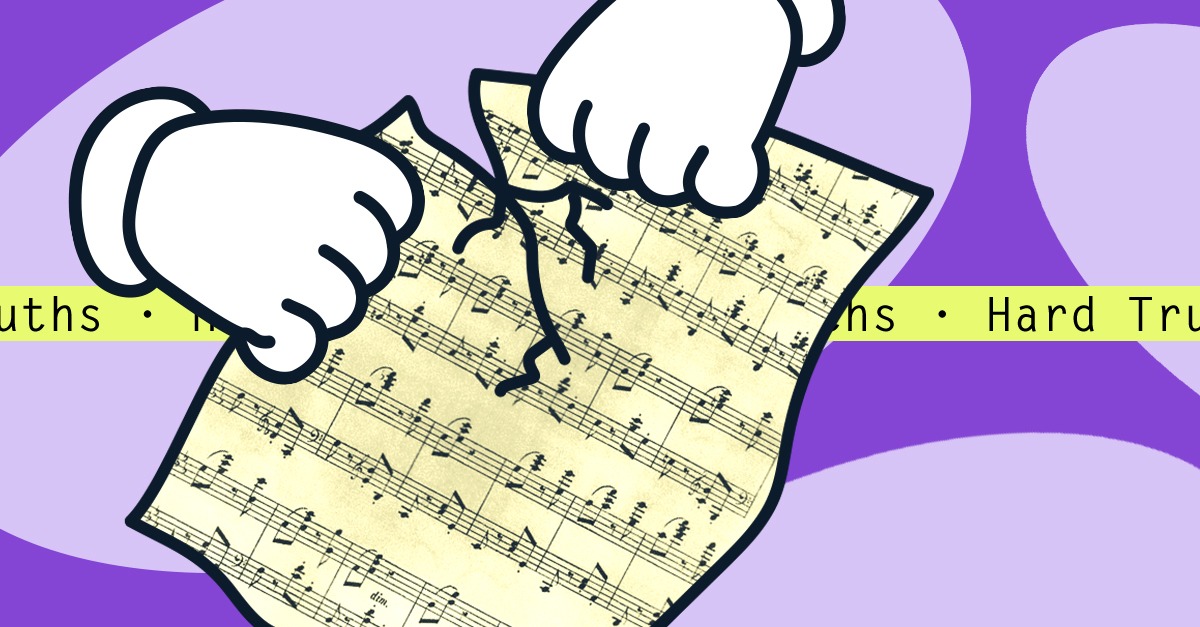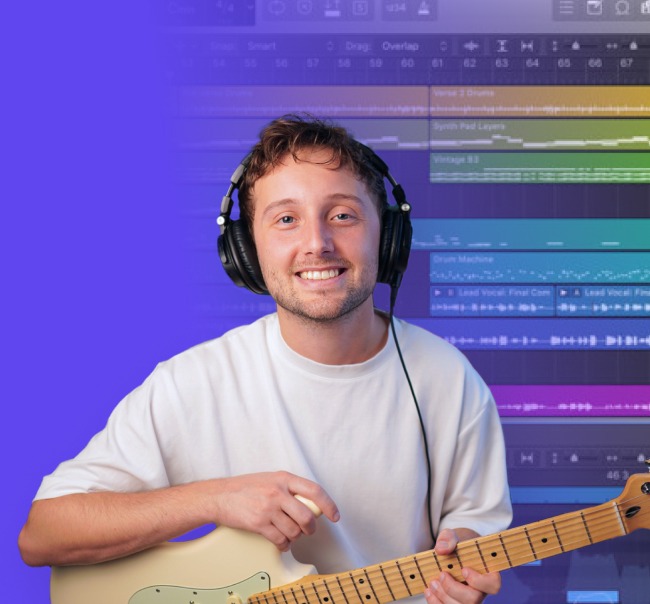
Hard Truths: Music Theory Gets in the Way

Music theory is an extremely useful tool when practicing music and writing songs.
Knowing how to build all 12 keys with the circle of fifths and play them effortlessly on your instrument is an invaluable skill.
But it’s easy for music theory to spill over to other musical aspects of your life when you’re learning it. Your knowledge of music theory doesn’t determine your level of creativity.
Here’s my hard truth for today—obsessing over music theory will not only hinder your performances, but it will make them lifeless.
This isn’t to say that music theory should be completely disregarded if you’re a performer. It’s all in how you learn music theory, and allow it to digest in the learning process. Eventually, it will reveal itself naturally in your playing.
In this article I’ll explain when you should be thinking about music theory and how to practice it to get the most out of your performances.
Let’s get started.
Theory guides, production tips, new free plugins, gear guides and more—delivered weekly
Keep up with the LANDR Blog.
Practice music theory—don’t play it
If you’re reading this article, you’re probably familiar with the basics of music theory.
It’s essential information to know. Even so, you shouldn’t let this information cloud your thoughts when you’re playing.
Music theory isn’t music. It’s an idea. Actual music comes from audible vibrations that exist over time. For some reason, we’re able to feel feelings when we hear these organized frequencies.
Think of music theory more like a map. It’ll give you pathways and shortcuts to organize your musical vocabulary. You don’t want to be looking at a map while you’re driving though—that would be careless.
Think of music theory more like a map. It’ll give you pathways and shortcuts to organize your musical vocabulary.
That’s why you should set boundaries for when you think about music theory. If you’re practicing minor scales, think about music theory.
When you’re jamming with a band, think about jamming and feel the music.
If you divert your attention away from the jam session, everyone’s going to feel that energy shift in the music.
It’s tempting to want to put what you’re learning to practice. The downside is that it takes time for music theory to innately reveal itself in your playing.
Playing music is like a conversation
When you’re having a deep conversation with someone, you don’t write down what you’re going to say beforehand.
That would take away all the ebb and flow from the conversation.
I’m sure you’ve also been in conversations where the person you’re talking to isn’t listening, and just waiting to respond. They’re stuck in their brain trying to formulate a response before you’re even finished speaking!
These examples are similar to how music theory can affect a killer jam session. You want to be reacting to the music as it happens—feeling the music.
To do this effectively, you have to clear your mind—almost as if you’re in a meditative state.
If you check out videos of top jazz musicians performing, it almost looks as if they’re dreaming. The music is pouring out of them.
While they may be playing an altered scale over a complex jazz chord progression, they’re not thinking about it. They’ve practiced and internalized that sound, and can express it effortlessly.
It’s tempting to want to play a new scale you just learned in a musical context. Just keep practicing it, and let it reveal itself to you naturally.
How to practice and play
With so many elements of music to practice, it’s hard to know where to start—especially if you’re eager to bring theoretical concepts into your repertoire.
Here are three approaches to practicing, and playing that will help you approach music theory naturally.
1. Practice at different tempos
Ballads are slow moving, and expressive. Bebop and metal music are often blazing fast.
You’ll likely play music at many different tempos throughout your musical journey.
You’ll likely play music at many different tempos throughout your musical journey.
It’s common for musicians to prefer specific tempos. They’ll feel more comfortable at a tempo they’ve played numerous times, compared to one they never practice.
That’s why it’s important to practice music theory at a variety of tempos. By doing so, you’ll be able to fully express yourself using what you’ve practiced, at any speed.
2. Practice variations and write parts out
Being able to play blazing fast scales up and down can be impressive for a few seconds.
By practicing your scales, arpeggios, triads, and seventh chords using different variations, you’ll start to build a better framework for more creative possibilities.
Variations can include inversions, fragments of scales, patterns, changing intervals within a scale—I could go on for a while. It’s important to pick one thing, stick to it and practice it until it feels natural.
It’s important to pick one thing, stick to it and practice it until it feels natural.
You should also start learning to play along with your favourite artists and writing down the parts you like. By doing this, you’ll be able to get into their head and attempt to feel what they were feeling when they played a specific phrase, or solo.
3. Perform with a clear mind
It’s important to leave the practice mindset at home when you go to jam, or perform with others.
What you’ve practiced might not appear right away in your playing. It takes time for that information to digest.
Eventually, you’ll be playing and you’ll have an ‘aha’ moment—The material you’ve been practicing so diligently will creep into your performance.
It’s a great feeling, but you’ll need patience. These ‘aha’ moments still happen to me years later!
Focus on listening to the music as you play. The more you stay connected to the music, the better your performance will be.
Theory of everything
Music theory can seem super dull and boring—because it is.
The application of music theory is where it gets exciting, but it takes time, patience, and diligence.
When you’re playing or performing, focus on the moment. That’s where the real music happens.
Gear guides, tips, tutorials, inspiration and more—delivered weekly.
Keep up with the LANDR Blog.




